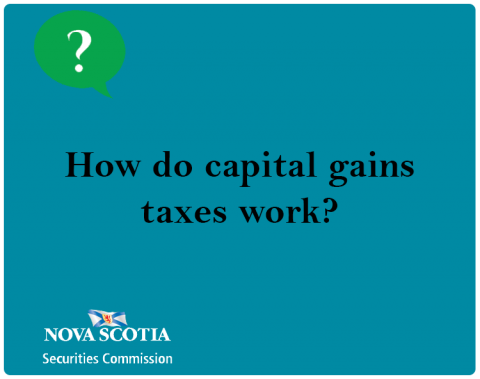Submitted by nsscadmin on

It’s getting closer to income tax time and we’ve been seeing an increase in investors asking about taxes. One particularly popular tax topic is capital gains and how they’re taxed.
If you make money on an investment by selling it for more than you paid for it, and you don’t hold that investment in a registered account like an RESP, RRSP, RRIF or TFSA, you will have to pay capital gains tax.
In Canada, 50 percent of your capital gains are taxable. We’ve seen several people online confused about this and think that when they have a capital gain they automatically lose 50 percent of it to taxes. This is not how it works.
As we said, 50 percent of your capital gains are taxable. So, if you made a $1000 capital gain, then $500 would be taxable. This means you must add this $500 to your income for the year. When it is added to your income, the rate of tax applied to it is then determined by your income bracket. So, you still have the other 50 percent, it’s just not subject to taxes in Canada.
One other important thing to remember is that you only pay tax on realized capital gains. Here’s what that means. Let’s say you purchase $500 in stock. After a year passes the stock has grown in value and is now worth $1,000. You have an unrealized capital gain of $500. It would only become a realized capital gain, and become taxable, if you sold it now. You are not taxed on capital gains profit you have not received yet.
When doing your annual income tax return, if you have any questions or are unsure of anything when it comes to your investments always consult your adviser and a tax expert.
**Update - April 27, 2024** Starting on June 25, 2024, for all realized capital gains above $250,000, 66.6 percent will be taxable. This was increased from the 50 percent taxable limit which still applies to all capital gains under $250,000.
**Update - March 15, 2025 - The increase in captial gain tax inclusion rates has been postponed until Janaury, 2026.**
